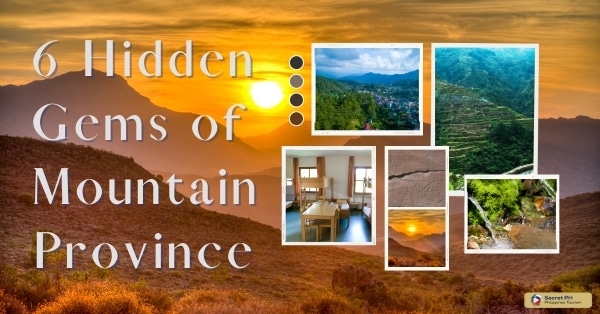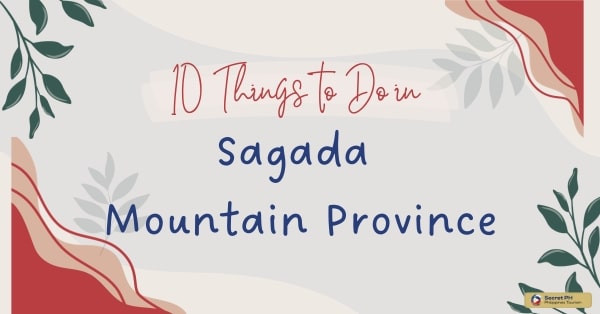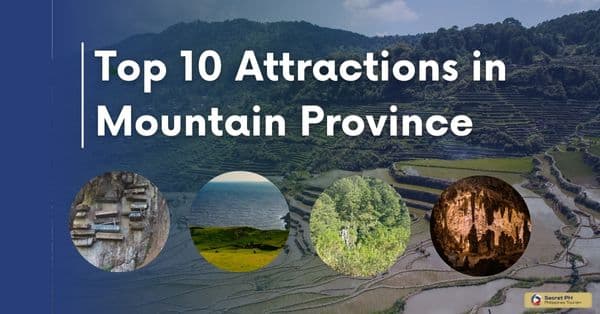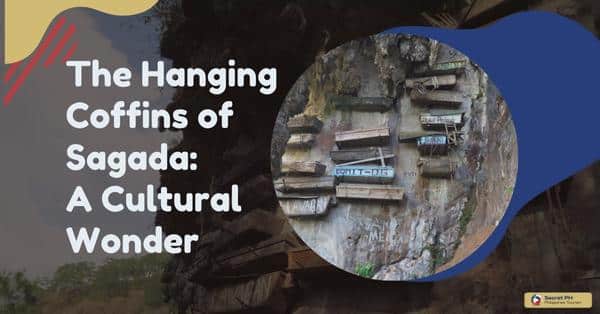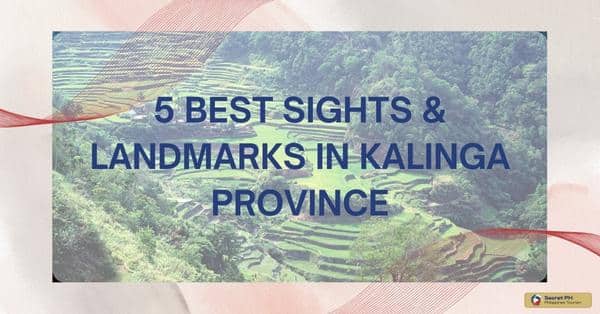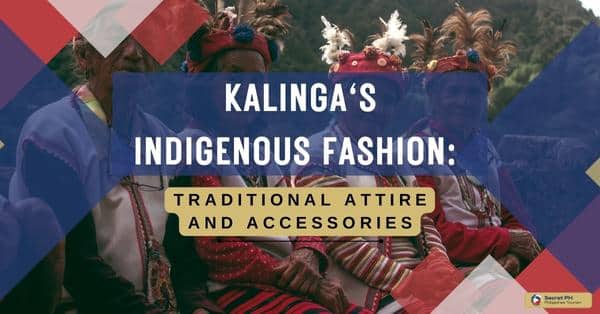Explore the rich history of the Visayas in the Philippines, a region with a diverse cultural identity. Discover historical landmarks, religious heritage sites, cultural treasures, and natural wonders that reflect the region’s unique heritage. Immerse yourself in vibrant festivals and enjoy delicious cuisine while island-hopping.
In this article, we’ll take a closer look at the history and heritage of the Visayas as well as some of its contemporary developments and preservation efforts. We’ll also discuss what it’s like to island-hop around the archipelago and experience the unique Visayan way of life through their festivals, food, and traditions. Come join us on this journey to discover the beauty of the Visayas!
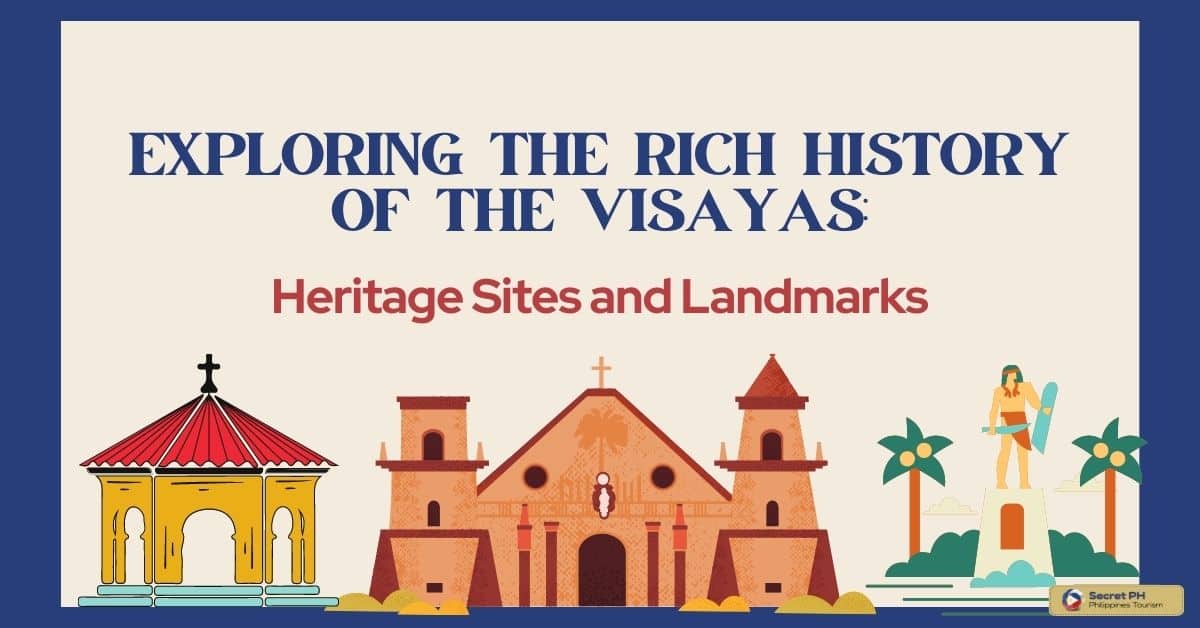
Tracing the Roots of Visayan Culture and History
Tracing the roots of Visayan culture and history is a fascinating journey that takes us back to ancient times. Before the arrival of foreign powers, the Visayas were inhabited by indigenous groups who had their own customs, traditions, and beliefs. These indigenous groups were skilled in farming, fishing, and trading, and they developed complex societies with their own social hierarchies and systems of governance.
Over time, the Visayas became a melting pot of different cultures and traditions, shaped by various influences such as Malay, Chinese, and Islamic cultures. The arrival of the Spanish in the 16th century marked a turning point in Visayan history, as they brought with them a new language, religion, and way of life. Today, the Visayas continue to evolve and thrive as a region with a unique identity that reflects its rich and diverse cultural history.
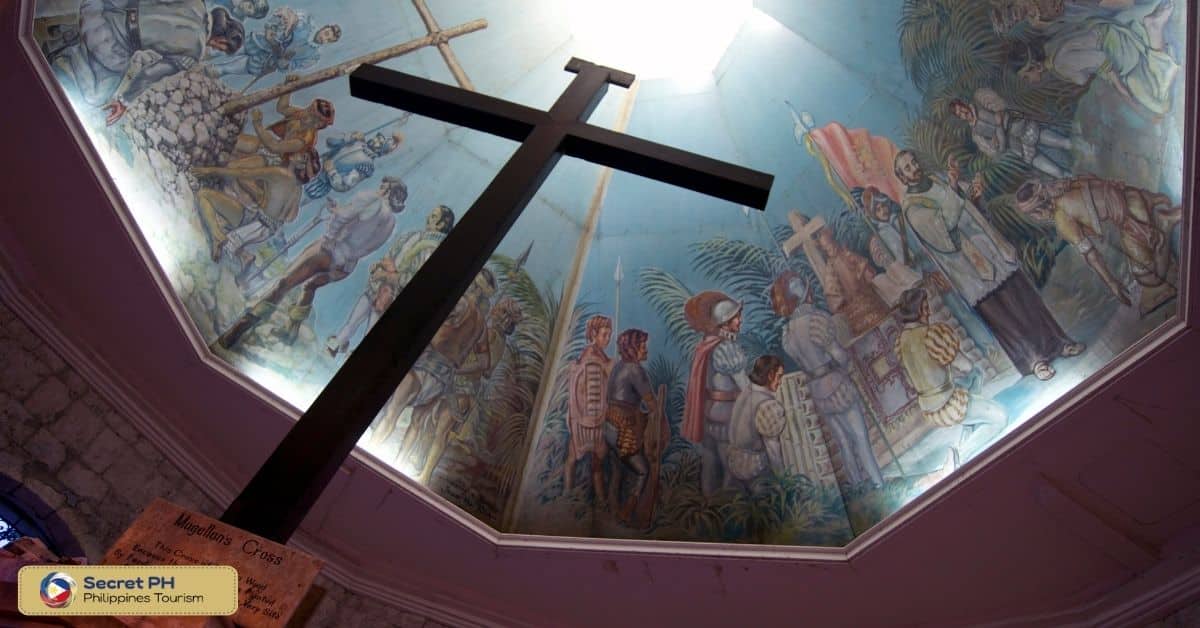
Historical Landmarks of the Visayas
The Visayas region in the Philippines is known for its white-sand beaches and crystal-clear waters. However, beyond its natural beauty, this region has also played a significant role in Philippine history. From the arrival of the first settlers to the Spanish colonization, the Visayas region has been a witness to various milestones in the country’s development.
Let’s take a closer look at some of the historical landmarks that can be found in the Visayas region.
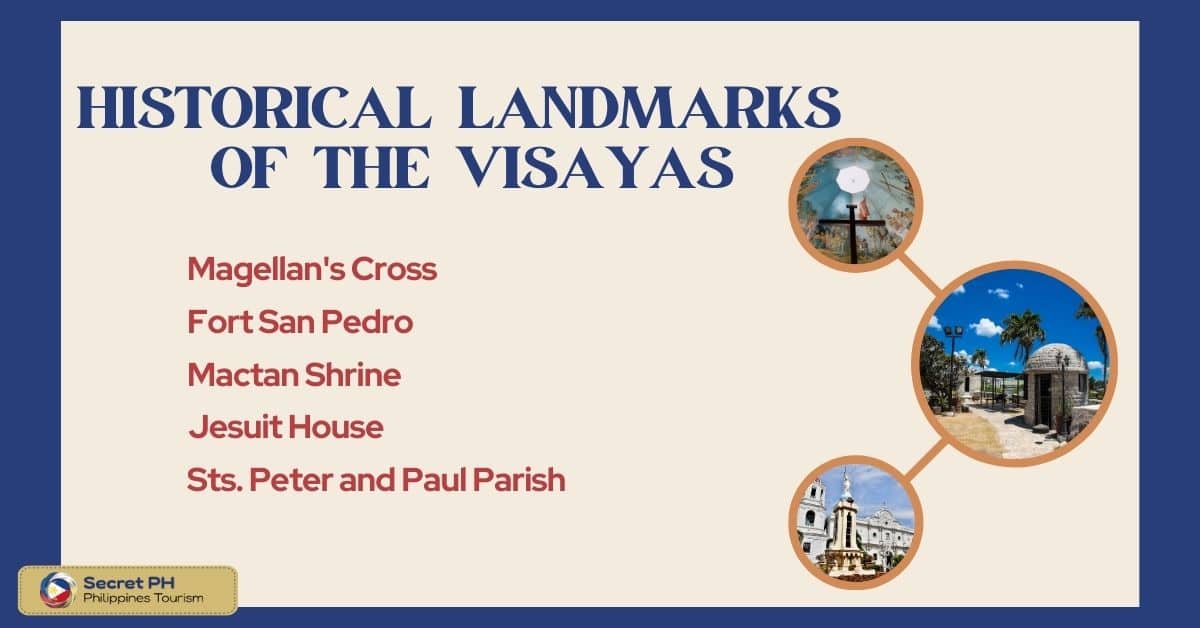
Magellan’s Cross
Located in Cebu City, Magellan’s Cross is one of the most famous historical landmarks in the Visayas region. The cross was erected by Ferdinand Magellan when he arrived in Cebu in 1521, making it a symbol of the Philippines’ conversion to Christianity. The original cross has been preserved inside a wooden frame to prevent further decay.
Address: 7WV2+CQG, P. Burgos St, Cebu City, Cebu
Opening Hours: 8 AM–6 PM
Phone: (078) 945 6321
For directions, click here.
Fort San Pedro
Fort San Pedro is a military defense structure situated in Cebu City. It was constructed by Spanish conquistador, Miguel López de Legazpi, in 1565. The fort has since served as a military stronghold during the Spanish colonial era and the American colonial period.
Address: 7WR4+X7J, A. Pigafetta Street, Cebu City, 6000 Cebu
Opening Hours: 8 AM–5 PM
Phone: (032) 256 2284
For directions, click here.
Mactan Shrine
The Mactan Shrine in Lapu-Lapu City, Cebu, commemorates the Battle of Mactan, which took place in 1521. It was here where Filipino hero Lapu Lapu fought and killed Portuguese explorer Ferdinand Magellan. The shrine includes a bronze statue of Lapu Lapu and a museum that showcases the history of the battle.
Address: Mactan Shrine, Lapu-Lapu City, Cebu
Opening Hours: 5 AM–10 PM
For directions, click here.
Jesuit House
Located in Cebu City, the Jesuit House is one of the oldest houses in the Philippines. It was built in the 17th century and was used as a retreat house for Jesuit priests. Today, the house serves as a museum that displays artifacts and antiques from the Spanish colonial era.
Address: 26 Zulueta St, Cebu City, 6000 Cebu
Phone: (032) 255 5408
For pictures, booking, and more information, click here.
For directions, click here.
Sts. Peter and Paul Parish
Sts. Peter and Paul Parish is a 16th-century church located in Cebu City, Cebu. Built by the Jesuits in 1599, the church was designed with both Spanish and Chinese influences.
It is one of the oldest churches in the country, reflecting not only Visayan culture but also showcasing a unique fusion of different cultures during the Spanish colonial era. The church is a major pilgrimage site for Catholics in the Visayas region and it continues to be an important part of Filipino cultural heritage. Visitors can take a tour of the church to learn more about its rich history and culture.
Address: 5P89+MQJ, Pres. M. L. Quezon St., Bayan ng Bantayan, 6052 Cebu City
For directions, click here.
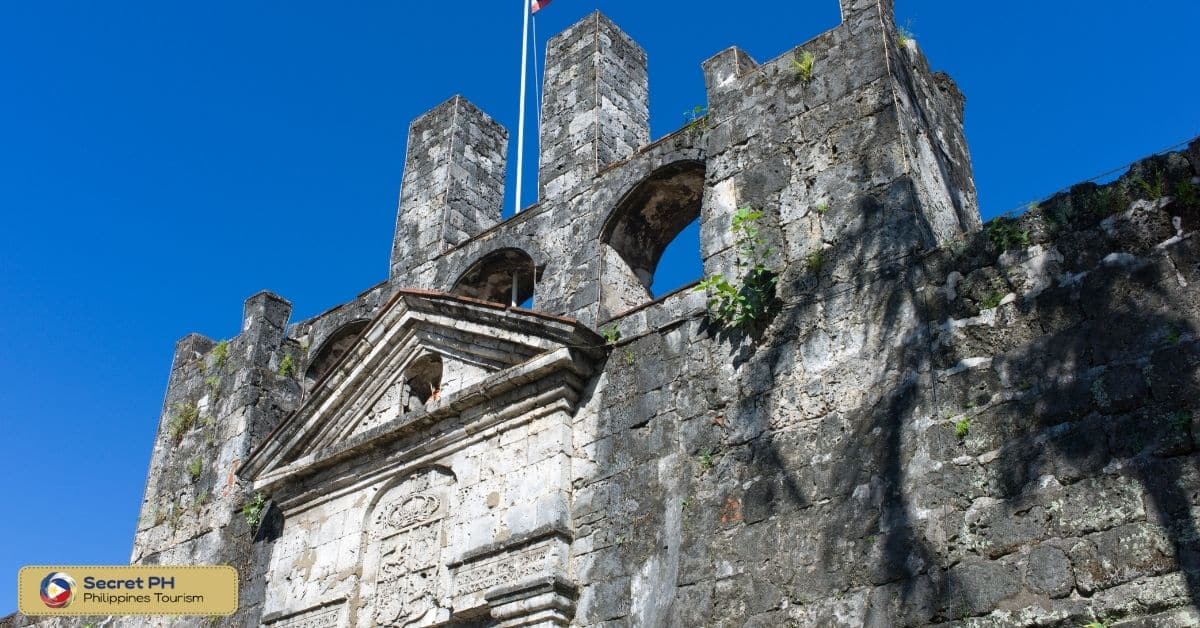
Religious Heritage Sites in the Visayas
The Philippines is known for its rich culture and history, particularly when it comes to religion. The influence of Spanish colonization on the country’s religious practices can still be seen today. The Visayas region, in particular, is home to several heritage sites that showcase the fusion of Filipino and Spanish cultures.
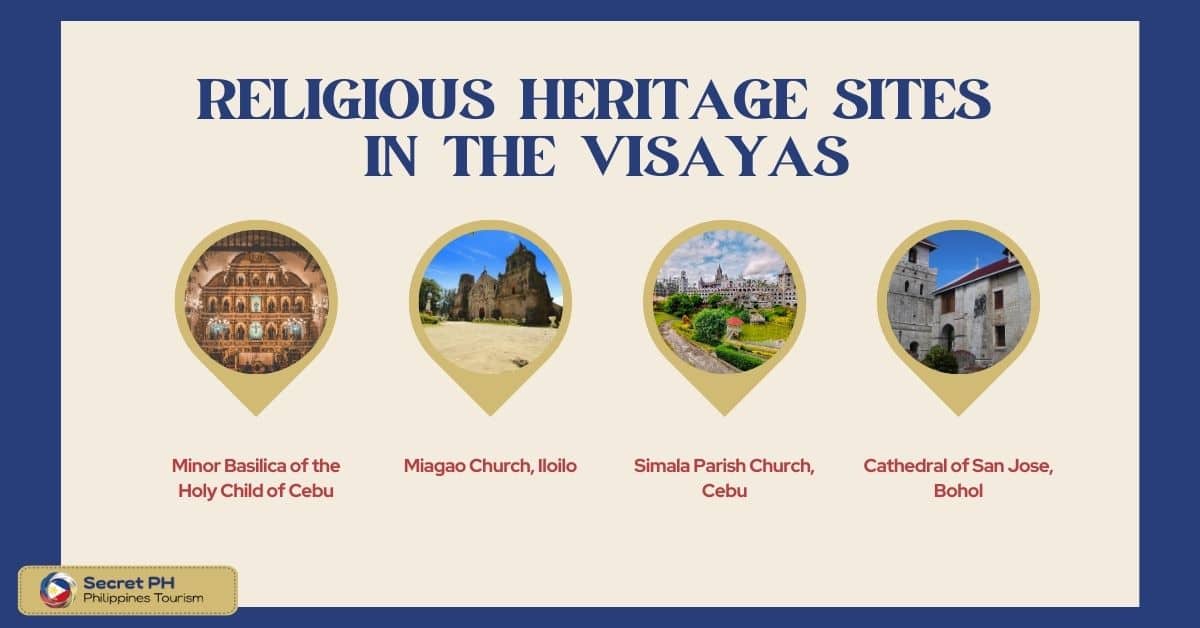
Minor Basilica of the Holy Child of Cebu (Basilica Del Sto. Niño), Cebu City
The Basilica del Santo Niño is one of the most visited religious sites in the country, located in the heart of Cebu City. The basilica is home to the oldest religious relic in the Philippines, the Santo Niño de Cebu. The image of the child Jesus is believed to have miraculous powers and is revered by millions of devotees. The basilica itself is an architectural wonder and features a mix of Spanish and indigenous design elements.
Address: Pilgrim’s Center, Osmeña Blvd, Cebu City, 6000 Cebu
Opening Hours: 6 AM–7 PM
Phone: (032) 255 6697
For pictures, booking, and more information, click here.
For directions, click here.
Miagao Church, Iloilo
The Miagao Church, also known as the Church of Santo Tomas de Villanueva, is a UNESCO World Heritage Site located in Iloilo. It is known for its intricate baroque architecture and features various carvings and reliefs that depict both Christian and indigenous motifs. The church was built in 1787 and has withstood several natural calamities and wars, making it an enduring symbol of faith and resilience.
Address: J6RP+P54, Zulueta Ave, Miagao, 5023 Iloilo
For pictures, booking, and more information, click here.
For directions, click here.
Simala Parish Church, Cebu
The Simala Parish Church in Cebu is a renowned pilgrimage site located on the slopes of Mt. Mago-ong in Sibonga municipality. The shrine is dedicated to the Blessed Virgin Mary and features a majestic castle-like structure built from white stones, adorned with lifesize sculptures of saints and angels.
Devotees flock to this site to ask for blessings and miracles, making it one of the most popular religious destinations in the Visayas. It also serves as a reminder of the region’s long-standing faith and devotion to Christianity.
Address: Barangay Simala, Natalio B. Bacalso S National Hwy, Sibonga, Cebu
Phone: +63921 447 1894
For pictures, booking, and more information, click here.
For directions, click here.
Cathedral of San Jose, Bohol
The Cathedral of San Jose, located in Bohol, is a stunning example of Gothic and Romanesque architecture. Built-in the late 1800s, it showcases intricate stone carvings and stained-glass windows that tell stories from the Bible.
The cathedral also features two towers which are said to have been used as watchtowers during the Spanish colonial period. Its well-preserved architecture provides a glimpse into the history of the Visayas region, making it an important religious heritage site in the Philippines.
Address: +H7F, Bohol Circumferential Rd, Tagbilaran City, Bohol
Phone: 0384110192
For pictures, booking, and more information, click here.
For directions, click here.
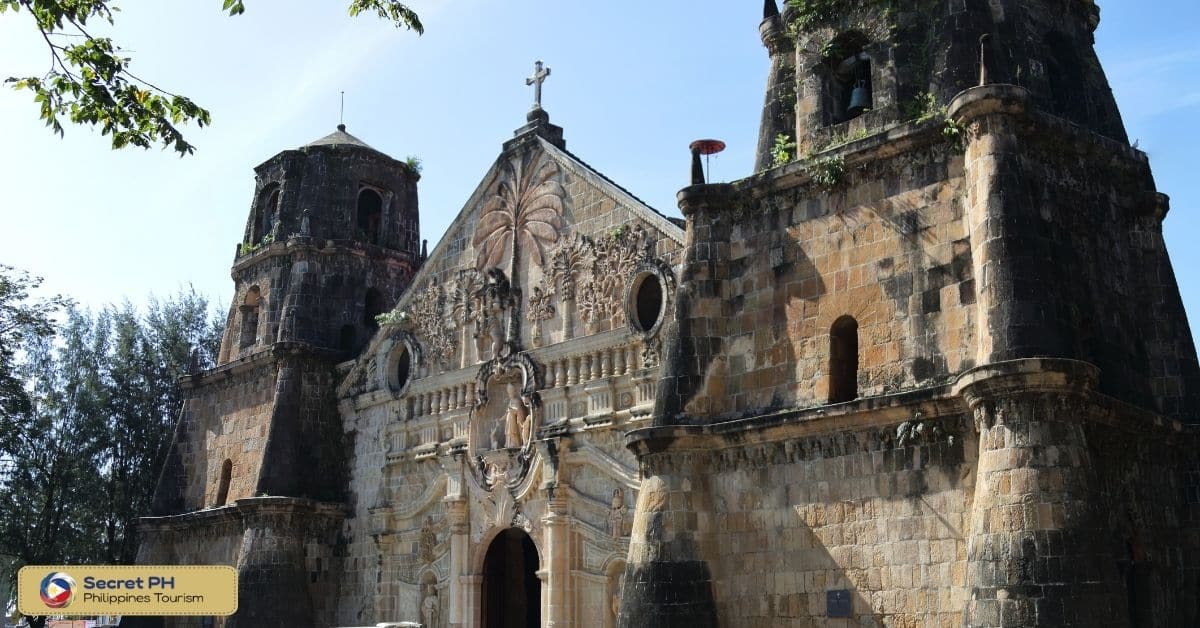
Natural Wonders of the Visayas
The Visayas region in the Philippines is a lush green wonderland that’s home to some of the world’s most unique natural wonders. From stunning beaches to incredible geological formations, the Visayas is a paradise for nature lovers. Let’s take a closer look at some of the most breathtaking natural wonders waiting for you to explore in this region.
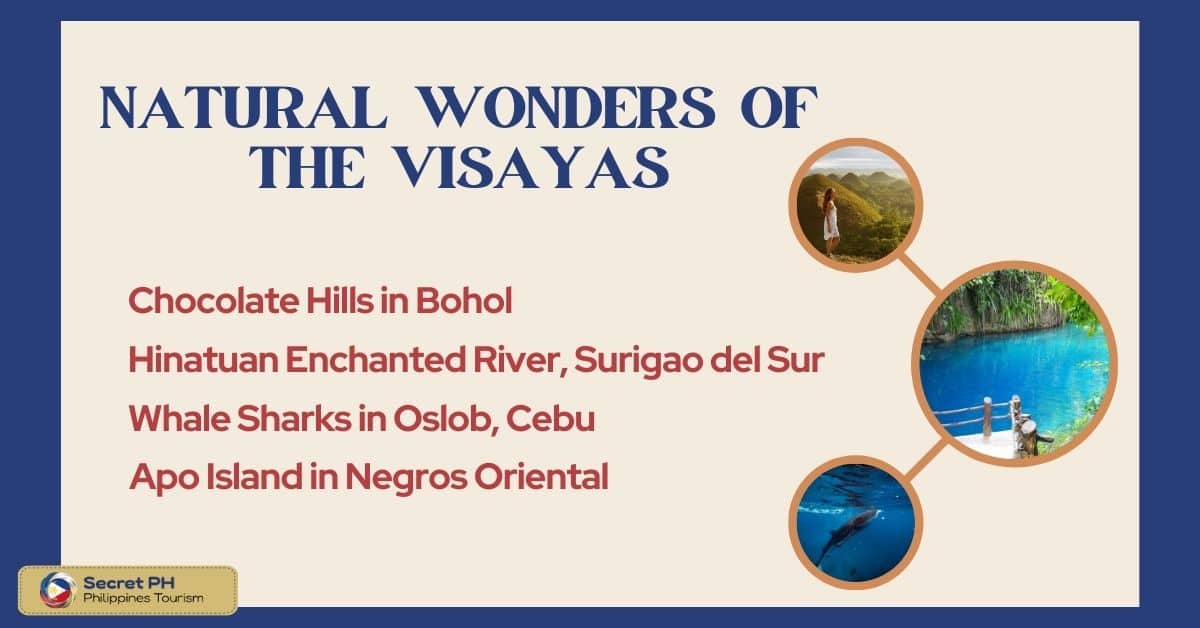
Chocolate Hills in Bohol
Bohol’s famous attraction, the Chocolate Hills, is a geological formation comprising over 1,700 cone-shaped hills that look like chocolate drops. These hills are spread across a 50-square-kilometer area and are covered with green grass that turns brown during the dry season. A visit to the top of one of the hills offers a panoramic view of the surrounding countryside.
Management: Department of Environment and Natural Resources
For pictures, booking, and more information, click here.
For directions, click here.
Hinatuan Enchanted River, Surigao del Sur
The Hinatuan Enchanted River in Surigao del Sur, also known as the “Philippine’s Blue Lagoon,” is a natural phenomenon with crystal-clear water, which changes into a beautiful cerulean blue as it deepens further into the river. The gentle river flow and the marine life in the river, such as the unique stingless jellyfish, make swimming here a memorable experience.
Address: Hinatuan, Surigao del Sur
Opening Hours: 8 AM–5 PM
Phone: +63917 257 6279
For pictures, booking, and more information, click here.
For directions, click here.
Whale Sharks in Oslob, Cebu
The tranquil town of Oslob in Cebu houses one of the Philippines’ most fascinating water creatures – the Whale Shark. Oslob attracts visitors from all over the world who come to swim alongside the gentle whale sharks that visit the town’s shores. Visitors can get up close and personal with these friendly giants to experience a once-in-a-lifetime encounter.
Address: F97H+9W, Natalio Bacalso Avenue, Oslob, 6023 Cebu
Opening Hours: 6 AM–12 PM
Phone: (032) 505 3714
Apo Island in Negros Oriental
Apo Island is situated off the coast of Negros Oriental, and it’s a volcanic island known for its pristine beaches and breathtaking coral reefs. The marine sanctuary situated on this island is home to a vast diversity of tropical fish, sea turtles, and colorful corals. The sparkling waters surrounding the island are the ideal spot for snorkeling and scuba diving to witness the beauty of marine life up close.
For directions, click here.
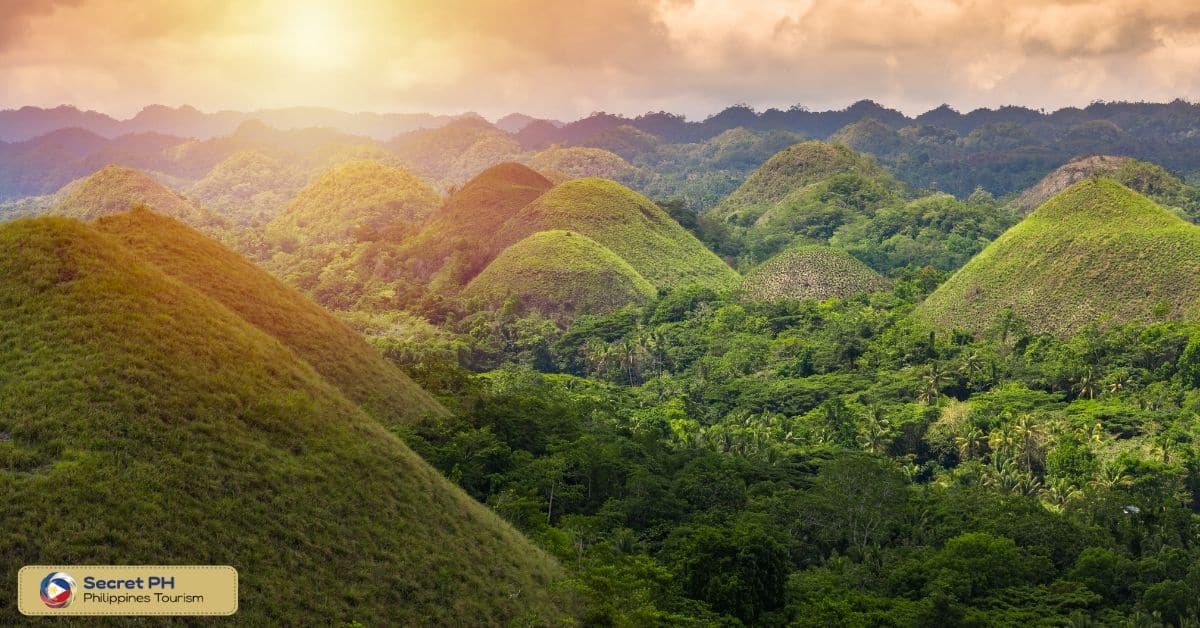
Contemporary Developments and Preservation Efforts in the Visayas
The Visayas region is composed of several islands in the central Philippines and is known for its stunning natural beauty, diverse culture, and vibrant economy. In recent years, the region has seen significant developments in various sectors, while also making efforts to preserve its rich heritage and environment.
Economic Development
In terms of economic development, the Visayas region has experienced significant growth, particularly in the tourism and business sectors. The region boasts some of the country’s most popular tourist destinations, such as Boracay, Cebu, and Bohol. These destinations, along with other lesser-known but equally beautiful islands, have attracted millions of visitors and generated billions of pesos in revenue.
Aside from tourism, the Visayas region has also seen an increase in business investments, particularly in the manufacturing and outsourcing industries. Industrial parks have been established in different parts of the region, such as the Mactan Economic Zone in Cebu and the Negros First CyberCentre in Negros Occidental. These developments have created thousands of jobs for locals and contributed to the region’s economic growth.
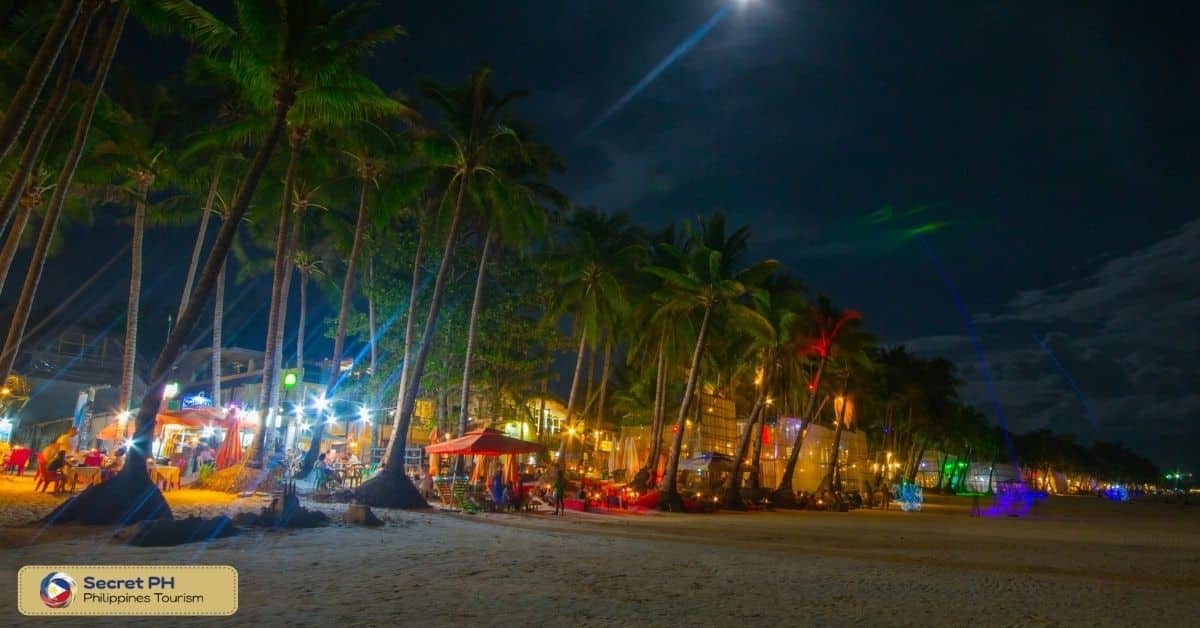
Environmental Conservation
Despite the economic development, the Visayas region has also become more aware of the importance of environmental preservation. Various efforts have been made to protect the region’s natural resources, particularly its marine ecosystems.
One example is the Boracay Rehabilitation Plan, which was implemented in 2018 to address the issues of water pollution and unregulated development in the popular island. The plan included a temporary closure of the island to tourists, the reconstruction of drainage systems, and the removal of illegal establishments near the beachfront. The rehabilitation efforts have resulted in a cleaner and more sustainable environment in Boracay.
Another conservation initiative is the establishment of marine sanctuaries in different parts of the region. These sanctuaries, such as the Apo Island marine reserve in Negros Oriental, aim to protect and preserve the rich marine biodiversity in the region.
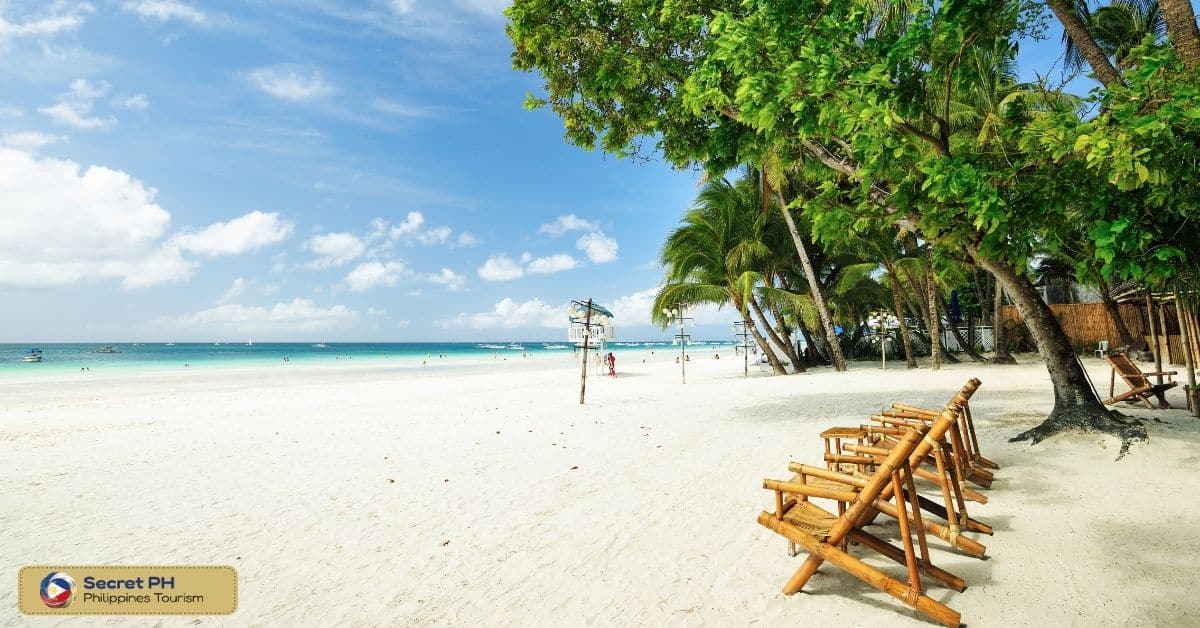
Cultural Preservation
The Visayas region is also known for its rich cultural heritage, which includes various traditions, festivals, and historical sites. Efforts have been made to promote and preserve the region’s cultural identity, particularly through tourism and education.
One example is the inclusion of various cultural sites in the UNESCO World Heritage List. These include the Baroque Churches of the Philippines, which consist of four churches in the Philippines: the Miagao Church, the Nuestra Señora de la Asuncion in Ilocos Sur, the Santo Tomas de Villanueva in Iloilo, and the San Agustin Church in Manila.
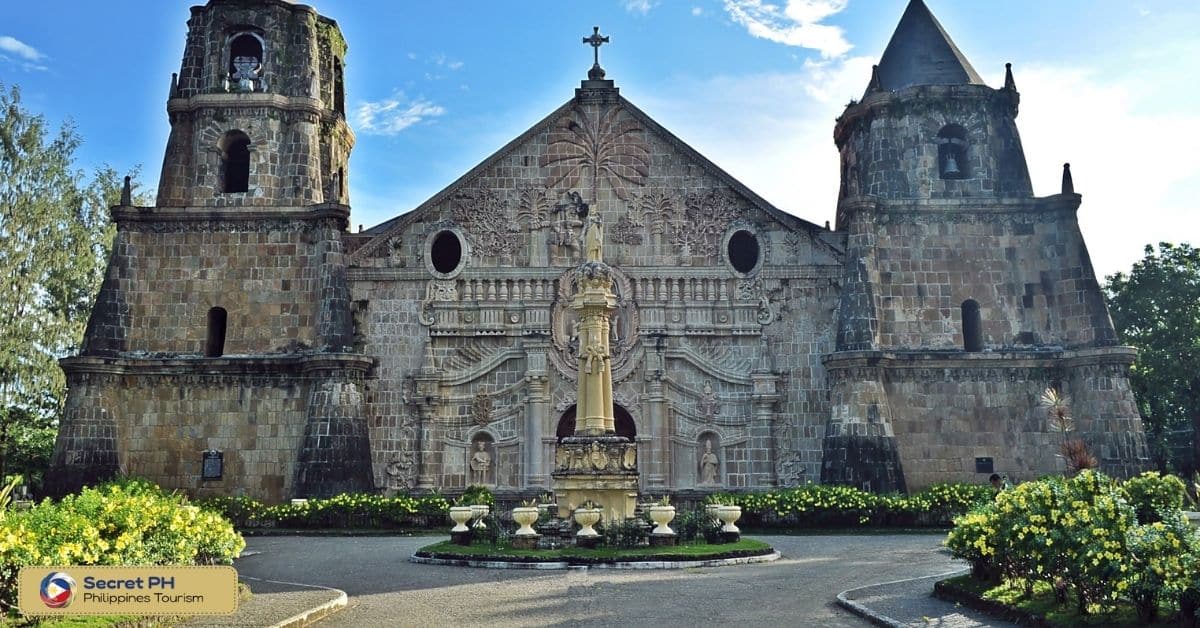
Experiencing the Visayan Way of Life: Festivals, Food, and Traditions
The Visayas is a cluster of islands sandwiched between Luzon in the north and Mindanao in the south. It is a region in the Philippines known for its vibrant culture, delicious cuisine, and colorful festivals. One of the best ways to experience the Visayan way of life is to immerse yourself in its rich traditions.
Festivals
The Visayas region in the Philippines is home to some of the country’s most colorful festivals. These festivals reflect the rich and diverse culture of the Visayan people, and they offer visitors a unique opportunity to experience the region’s traditions and history. Here are some of the most popular festivals in the Visayas:
1. Sinulog Festival, Cebu– The Sinulog Festival is perhaps the most famous festival in the Visayas, celebrated every third Sunday of January in Cebu City. This festival honors the Sto. Nino, the patron saint of Cebu. The festival features a grand parade with brightly costumed dancers, music, and street parties that last for days.
2. Ati-Atihan Festival, Aklan– The Ati-Atihan Festival is a week-long celebration in Kalibo, Aklan. The festival is a commemoration of the Malay settlement in the region and the arrival of the Ati, the first settlers of the islands. The festival is marked by street dancing competitions where performers dress in colorful costumes, paint their bodies black, and wear headdresses made of feathers and beads.
3. Dinagyang Festival, Iloilo– Celebrated every fourth Sunday of January in Iloilo City, the Dinagyang Festival is a tribute to the Santo Nino. The festival features colorful street parties and a grand procession, where participants in traditional costumes perform street dances to the beat of drums and shouts of “Viva Señor Santo Niño!”
4. Masskara Festival, Bacolod– The Masskara Festival is an annual festival held in Bacolod City every third weekend of October. It is a festival of masks, hence the name “masskara.” The festival was created to boost the city’s morale after a tragic event, and it has since become a celebration of Bacolod’s joy, resilience, and creativity.
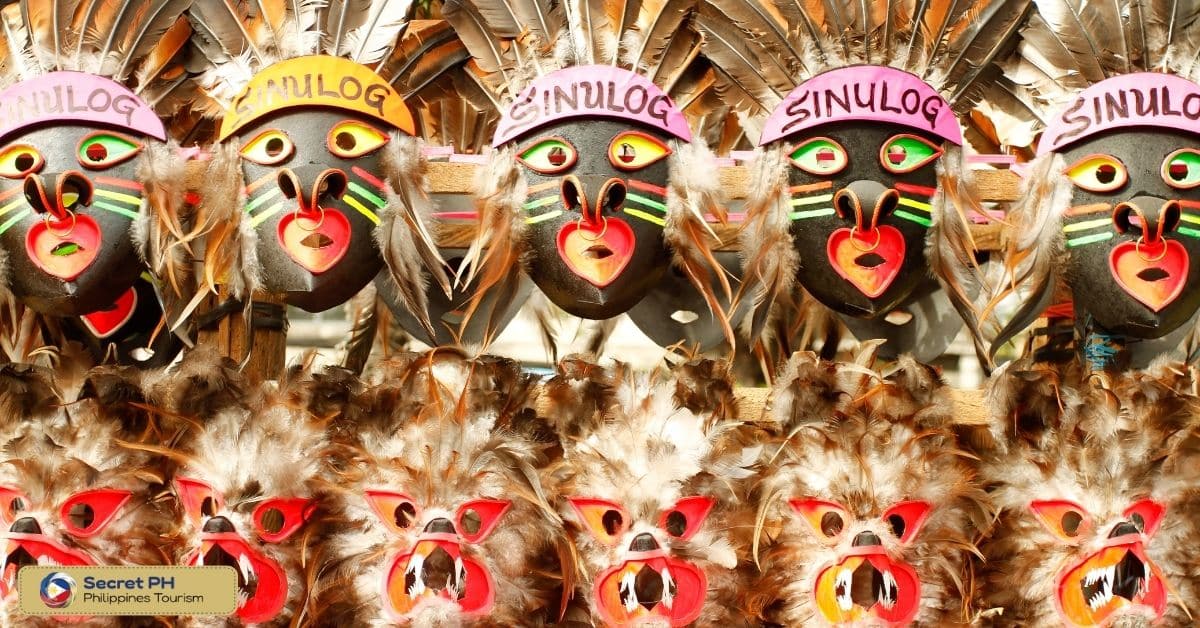
Food
The Visayas region in the Philippines is known for its diverse and flavorful cuisine. It is a melting pot of different influences from neighboring regions, giving rise to unique dishes with bold flavors. Here are some of the most popular foods in the Visayas:
Lechon: Lechon is a roasted pig that is crispy on the outside and juicy on the inside. It is a staple dish in any Visayan celebration, and it is considered a delicacy. The pig is slow-roasted over a spit for hours until the skin turns golden brown and crispy.
Kinilaw: Kinilaw is a type of ceviche made with fresh raw fish, vinegar, and various herbs and spices. The dish is often served as an appetizer, and it is best enjoyed with a cold beer or soda. The acidity of the vinegar balances the mild taste of the raw fish, creating a refreshing and tangy flavor.
Batchoy: Batchoy is a bowl of hot noodle soup made with pork or beef broth, fresh egg noodles, beef or pork slices, liver, and other offal, topped with chicharon (fried pork rind) and spring onions. It originated in Iloilo but has since become a Visayan staple comfort food.
Inasal: Inasal is a chargrilled chicken dish marinated in a mixture of spices, vinegar, and calamansi (a local citrus fruit). It originated in Bacolod and has since become a Visayan favorite.
Suman: Suman is a sticky rice dessert that is wrapped in banana leaves and steamed until cooked. It comes in various shapes and flavors, depending on the region. In the Visayas, suman is often paired with ripe mangoes and eaten as a midday snack.

Traditions
The Visayas region of the Philippines has a rich and diverse culture that is defined by its unique set of traditions. These customs and beliefs have been passed down through generations and are an integral part of the Visayan way of life. Here, we will explore some of the most significant traditions in the Visayas and their importance in the region’s culture.
1. Banig Weaving – The Visayas is known for its intricate and colorful hand-woven banig mats. This traditional craft has been passed down through generations and is an essential part of the region’s culture.
2. Hilot – Hilot is a traditional healing practice that is still prevalent in the Visayas. It involves the use of massage and herbal remedies to promote physical and spiritual well-being.
3. Novena – The novena is a Catholic tradition in which devotees pray for nine consecutive days. It is a significant practice in the Visayas, and many families and communities gather to pray together during the novena.
4. Procession – The procession is a Catholic tradition that is prevalent in the Visayas. It involves a parade of images of saints and religious icons through the streets, accompanied by music and prayers.

In conclusion
The Visayas region of the Philippines is a beautiful place with a rich cultural heritage. It boasts stunning natural beauty, vibrant festivals and traditions, diverse cuisine, and numerous economic and environmental conservation efforts.
From swimming alongside whale sharks in Oslob to witnessing lively street parties during festivals like Dinagyang in Iloilo, the Visayas offers a truly unique and memorable experience. Whether you’re looking for an adrenaline-filled adventure or a quiet escape, this region has something to offer its visitors.

